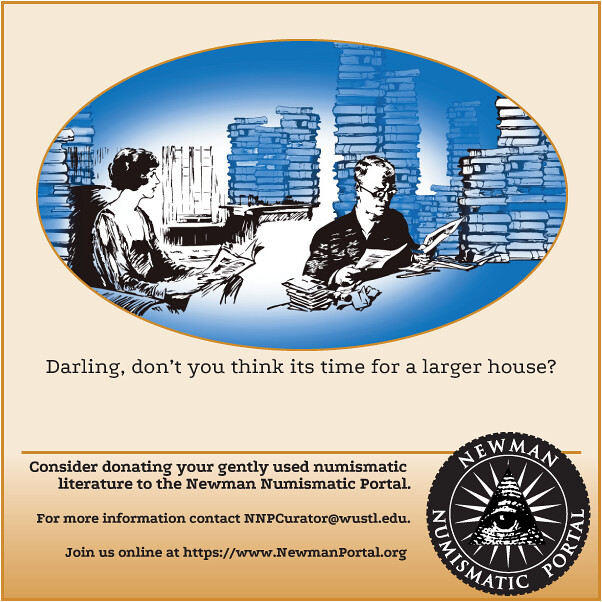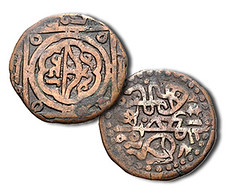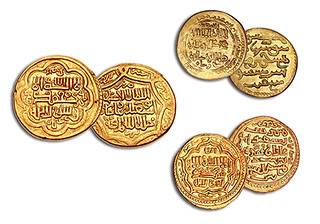
PREV ARTICLE
NEXT ARTICLE
FULL ISSUE
PREV FULL ISSUE
COINAGE OF THE MONGOLS
Last week we discussed a new book on Coins of the Golden Horde: Period of the Great Mongols (1224-1266) . An article published
today on CoinWeek by Mike Markowitz examines the coins of the mongols in more detail. Here's a very short excerpt - be sure to
read the complete article online. -Editor
As nomads, the Mongols had little use for money. They measured wealth in horses, sheep and cattle. They valued well-made weapons, bridles and saddles. But when they came to rule the sophisticated urban economies of central Asia, Iran, and China they had to adopt forms of currency that were familiar and acceptable to these populations. Coins of the Mongol empire therefore fall into two categories. Coins for use in Muslim areas follow the well-established pattern of Islamic coinage: gold, silver and copper denominations with Arabic inscriptions and geometric decoration. Coins issued for East Asian parts of the empire look Chinese – mainly cast bronze with a square hole in the center. But there are exceptions to these patterns, many of great rarity and historic interest. A wide variety of languages and writing systems appear on the coins of Mongol rulers, and while there were no portraits there are occasional pictorial designs. Genghis Khan
The only silver coin type bearing the name of “The Just, The Great, Genghis Khan” in Arabic was a dirhem of about three grams,
first issued around 1221.
The Golden Horde
Berke converted to Islam, and later coins of the Golden Horde generally bear Arabic religious inscriptions. Jani Beg, Khan of the Golden Horde from 1342 to 1357 placed the image of a lion (looking like a rather scruffy dog) on some of his coins. Into China: The Yuan Dynasty
The complex Chinese written characters were unsuitable for writing the Mongol language, and Kublai commissioned a Tibetan monk and court official named Drogön Chögyal Phagpa to design a universal alphabet of 36 letters that could be used for all the languages of the empire. This intricate, angular script appears on many coins of the Yuan dynasty, either alone or in combination with Chinese characters. To read the complete article, see:
To read the earlier E-Sylum article, see:

Wayne Homren, Editor The Numismatic Bibliomania Society is a non-profit organization promoting numismatic literature. See our web site at coinbooks.org. To submit items for publication in The E-Sylum, write to the Editor at this address: whomren@gmail.com To subscribe go to: https://my.binhost.com/lists/listinfo/esylum All Rights Reserved. NBS Home Page Contact the NBS webmaster 
|


